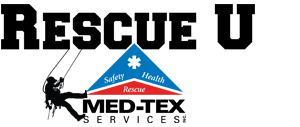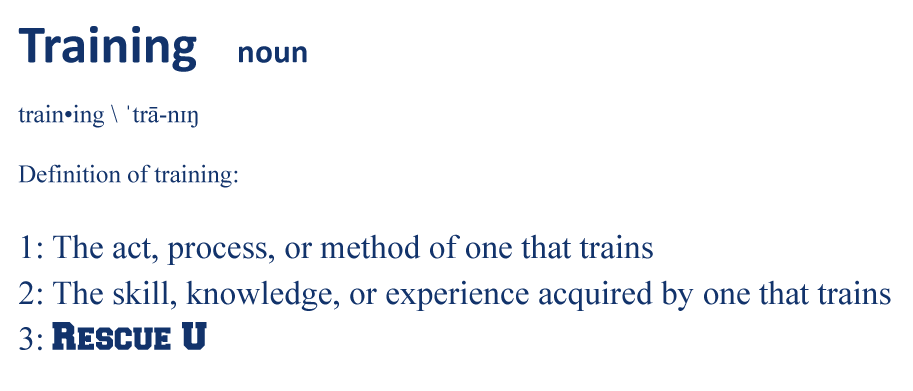ROPE RESCUE COURSES
Aerial and Ground Ladder use in Rope Rescue
There are serious issues associated with using an aerial ladder and ground ladders in a technical rescue situation. This course examines the safety issues and safe ways of using ladders in rescue. There are many myths and misinformation regarding the use of a power ladder for a high directional. Participants will look at real world incidents in the use of this device. This is a classroom and hands-on course.
Prerequisites: Age 18yrs and up
Course Length: 4 hours
PA DOH EMS Con-Ed: 4.0 hours (2 CPC & 2 Other)
Horizontal Line Rope Rescue System
According to NFPA 1006: Standard for Technical Rescue Personnel Professional Qualifications, Rope Rescue Technicians must be able to build a “rope rescue system intended to move a suspended load along a horizontal path to avoid an obstacle.” Most rescuers know this as “High Lines.” What NFPA does not say is exactly how you must be able to rig along a horizontal path. This 32-hr. program takes that language and turns it into a class in which participants will build various systems. Through classroom session, tool lab and practical application, participants will learn about various new and old technology, including decent control devices (DCD’s), belay system, reviewing anchoring systems, and rope & system components. This program reviews pre and post tensioning, critical angles, forces, and the use of load cells. Some of the horizontal rope systems that will be rigged in this program include the English & Norwegian Reeve High-Line, Traditional Skate Block, Tracking Skate Block, Two Rope Offset (Cross Haul), Arbor Reeve, Guiding Line, Tracking Line, Use of a Tag Line, Movable Control Point (MCP) and more. Pros and cons of each system will be discussed, and time will be allotted for skills and proficiency building since this is a technician level program. This is not an entry level program and it will be fast paced. Participants must possess a good understanding of ropes and rigging, forces, angles, and simple mechanical advantage systems. Participants will get hands-on with different types of rope, carabiners, DCD’s and more. Much of the program is hands on and physically demanding.
Prerequisites: Age 18 yrs and up and rope/high angle rescue training
Course Length: 32 hours
PA DOH EMS Con-Ed: 25.0 hours (15 CPC & 10 Other)
Introduction to Portable High Directional Devices
The use of a device to elevate a rope system is becoming more frequent as technology evolves and techniques change. These are primarily known as High Directional Anchor’s, Portable High Directional or Artificial High Directional (AHD). Regardless of what they may be called, these systems are designed to elevate rope lines above edges, obstructions, railings, and walls and are used in rescue operations and rope access work. This introductory program presents information on AHD’s, uses, capabilities, limitations, accessories, and more. Participants in this program will see, touch, set up and break down both the Arizona Vortex and the Terradaptor. Most of this program is hands-on and designed to better educate the end user on these devices. This is an ideal program for any department that is interested in purchasing a Portable High Directional System.
Prerequisites: None, open to all
Course Length: 8 hours
PA DOH EMS Con-Ed: 8.0 hours (2 CPC & 6 Other)
Portable High Directional Devices
The use of a device to elevate a rope system is becoming more frequent as technology evolves and techniques change. These are primarily known as High Directional Anchor’s, Portable High Directional or Artificial High Directional (AHD). Regardless of what they may be called, they are designed to elevate rope lines above edges, obstructions, railings, and walls and are used in rescue operations and rope access work. These systems function in a monopod/gin pole configuration, bipod/A-frame (conventional or sideways), easel (lazy leg), Quad Pod [Terradaptor] and even a conventional (symmetric) tripod. The two systems commonly used in technical rope rescue are the Arizona Vortex and Terradaptor. Both systems have their advantages, but both achieve the same goal of “elevate the system.” This introductory program presents information on AHD’s, uses, capabilities, limitations, accessories, and more. Participants will see, touch, set up and break down both the Arizona Vortex and the Terradaptor. Most of this program is hands-on and designed to better educate the end user on these devices. This is an ideal program for any department that is interested in purchasing a Portable High Directional System.
Prerequisites: Age 18 yrs and up and previous rope / high angle rescue training
Course Length: 32 hours
PA DOH EMS Con-Ed: 32.0 hours (4 CPC & 28 Other)
Rope / High Angle Rescue Operations
This program provides participants with an update on the latest techniques, equipment, and information shared in technical high angle rescue operations, including the latest mechanical devices, pulleys, carabiners, rope, harnesses, and more. Much of this program is hands-on with scenarios and realistic problem-solving exercises. This program will quickly get the dust-off participants’ skills of ropes, knots, rigging, anchoring, use of PPE, mechanical advantage system, patient packaging and more. This scenario-based program will have participants performing rappelling, switching rope systems, problem solving on rope, directing rescue operations including raising and lowering a litter. This program is designed to meet requirements outlined in NFPA 1006-2021. This program will involve training at heights.
Prerequisites: Age 18 yrs and up
Course Length: 32 hours
PA DOH EMS Con-Ed: 20.0 hours (3 CPC & 17 Other)
Rope / High Angle Rescue Technician
Technician level programs involve more complex skills, the ability to operate independently and a high level of competency. This technician level refresher program addresses skills outlined in the Operations Refresher, in addition to high angle pick off, operating as a litter tender, constructing a horizonal rope rescue system, and using climbing aids. Scenario-based instruction is key to having participants performing their skills repeatedly and with a variety of challenges. At the request of an agency, this program can be combined with the Operations refresher to accommodate personnel from various levels in one program. This program is designed to meet requirements outlined in NFPA 1006-2021. This program will involve training at heights.
Prerequisites: Age 18 yrs and up and previous rope / high angle rescue training
Course Length: 32 hours
PA DOH EMS Con-Ed: 20.0 hours (10 CPC & 10 Other)
Rope / Low Angle Rescue
Many books and publications define High vs. Low Angle in the form of specific angles such as 30 degrees, 45 degrees, etc. NFPA defines High Angle as an environment in which the load is predominantly supported by the rope rescue system, whereas Low Angle is predominantly supported by itself and not the rope rescue system (e.g., flat land or mild sloping surface). The need to understand this is critical to the rescue system that is designed for a rescue, while ensuring personnel are not exceeding the scope of their training. This program addresses low angle rescue rigging, anchoring, ropes and knots, patient packaging, communications and more. This program was written to meet requirements outlined in NFPA 1006-2021.
Prerequisites: Age 18 yrs. and up
Course Length: 16 hours
PA DOH EMS Con-Ed: 16.0 hours (8 CPC & 8 Other)
Rope Rescue in Austere Environments
Rope rescues don’t always happen in the bright sunlight of a warm day. This course is designed to be held overnight in the winter months (ideally with snow on the ground!) This course tests participants’ rescue skills in adverse environments and out of their comfort zones.
Prerequisites: Age 18 yrs. and up and previous rope / high angle rescue training
Course Length: 16 hrs
PA DOH EMS Con-Ed: 10.0 hours (2 CPC & 8 Other)
Stokes Basket Usage: the most misunderstood tool on the Rescue Truck
Most rescuers think they know how to use this tool – but do they? This course reviews the different types of baskets and their uses. Different patient tie-in systems, patient protection systems and patient monitoring techniques will be discussed. This is a hands-on course in which participants will move a stokes basket through a stokes obstacle course.

